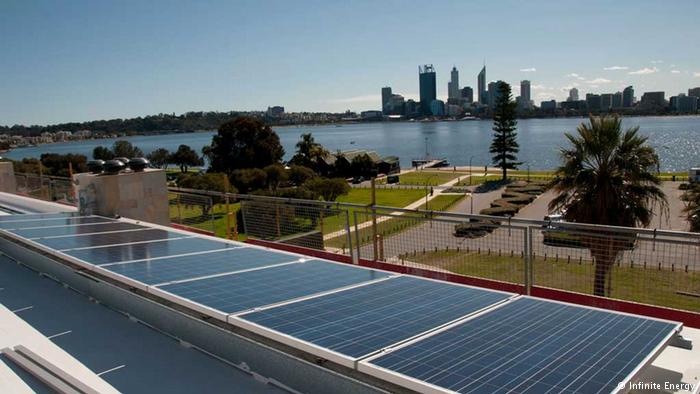WA can now boast that one in four households have a rooftop PV system, amounting to some 700 MW of generation capacity – the largest cumulative generator in the state. The high level of PV is causing demand on the electricity grid to dip during the day, a phenomenon well known within renewables observers as the ‘duck curve.’
The drop off in daytime demand on the South-West Interconnected Network (SWIS) has been so pronounced, that the first time on one day in 2017 it was at its lowest point during the middle of the day. The Australian Energy Market Operator’s (AEMO) head of strategy and innovation Cameron Parrotte made the observation, noting that, “when you talk about comparison to other States, percentage-wise we are flying,”
The West Australian reported the development on Sunday, under the headline ‘Solar may overwhelm WA electricity grid, warns Australian Energy Market Operator’. However, it is not the grid that is being overwhelmed, but the business case of the existing coal and gas generators and in particular the resident state-owned gentailer.
Synergy is vertically integrated and has monopoly access to the residential electricity market on the SWIS. Its retail and generation activities were re-assembled into one commercial entity under Premier Colin Barnett’s Liberal government. It now faces an invidious quadruple threat, or at least forces pulling it in various directions simultaneously.
The gentailer is currently dealing with grid demand that is declining during the middle of the day due a buoyant solar sector, and the challenge of operating aging coal and gas generation assets. At the same time it is being squeezed between an economy in which some households are struggling to meet bill repayments and a state government that is looking to wind back subsidies on electricity bills to plug its budget.
Synergy also, at the behest of the Barnett government, undertook the disastrous attempt to revive one of its 50-year old coal clunkers, the 400 MW Muja ABpower station, which it closed last year – having burnt through some $300 million. WA-raised renewables developer and energy analyst Simon Holmes à Court notes that the Muja AB fiasco should be a prescient reminder to those calling for the extension of AGL’s 500 MW Liddell Power Station.
WA’s Economic Regulation Authority (ERA) last week released its annual report into households under energy stress. It found that in 2016-17, the number of households having their electricity disconnected or struggling to pay bills was at a six-year high.
“Energy bill debt is an issue affecting many Western Australian households,” said the ERA’s chair Nicky Cusworth in a statement.
In addressing soaring rooftop PV production on the SWIS AEMO’s Parrotte suggested one solution would be to put in place subsidies for distributed battery storage, so it could be fed back in during afternoon and evening peaks. It could equally be suggested that the state government look to foster more low-income PV installs to help those struggling with bills, or subsidized solar leases provided by Synergy itself.
This content is protected by copyright and may not be reused. If you want to cooperate with us and would like to reuse some of our content, please contact: editors@pv-magazine.com.









2 comments
By submitting this form you agree to pv magazine using your data for the purposes of publishing your comment.
Your personal data will only be disclosed or otherwise transmitted to third parties for the purposes of spam filtering or if this is necessary for technical maintenance of the website. Any other transfer to third parties will not take place unless this is justified on the basis of applicable data protection regulations or if pv magazine is legally obliged to do so.
You may revoke this consent at any time with effect for the future, in which case your personal data will be deleted immediately. Otherwise, your data will be deleted if pv magazine has processed your request or the purpose of data storage is fulfilled.
Further information on data privacy can be found in our Data Protection Policy.